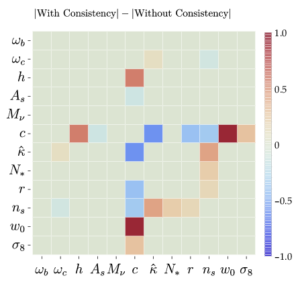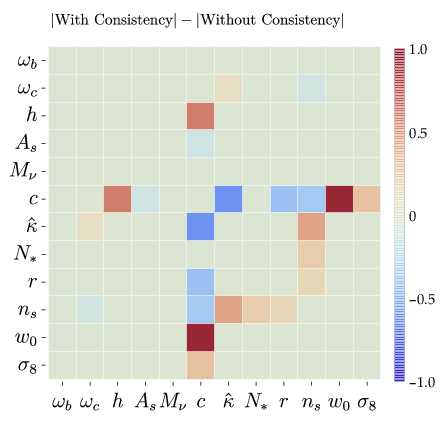| Authors: |
Santiago Casas, Georgios K. Karananas (Munich U., ASC), Martin Pauly (U. Heidelberg, ITP), Javier Rubio (U. Heidelberg, ITP & Helsinki Inst. of Phys.) |
| Journal: | Submitted to JCAP |
| Year: | 11/2018 |
| Download: | Inspire| Arxiv |
Scale-invariant alternatives to general relativity. The inflation–dark-energy connection
Abstract
We discuss the cosmological phenomenology of biscalar--tensor models
displaying a maximally symmetric Einstein--frame kinetic sector and
constructed on the basis of scale symmetry and volume--preserving
diffeomorphisms. These theories contain a single dimensionful
parameter $\Lambda_0$---associated with the invariance under the
aforementioned restricted coordinate transformations---and a massless
dilaton field. At large field values these scenarios lead to inflation
with no generation of isocurvature perturbations. The corresponding
predictions depend only on two dimensionless parameters, which
characterize the curvature of the field--manifold and the leading
order behavior of the inflationary potential. For $\Lambda_0=0$ the
scale symmetry is unbroken and the dilaton admits only derivative
couplings to matter, evading all fifth force constraints. For
$\Lambda_0\neq 0$ the field acquires a run-away potential that can
support a dark energy dominated era at late times. We confront a
minimalistic realization of this appealing framework with observations
using a Markov-Chain-Monte-Carlo approach, with likelihoods from
present BAO, SNIa and CMB data. A Bayesian model comparison indicates
a preference for the considered model over $\Lambda$CDM, under certain
assumptions for the priors. The impact of possible consistency
relations among the early and late Universe dynamics that can appear
within this setting is discussed with the use of correlation
matrices. The results indicate that a precise determination of the
inflationary observables and the dark energy equation--of--state could
significantly constraint the model parameters.


